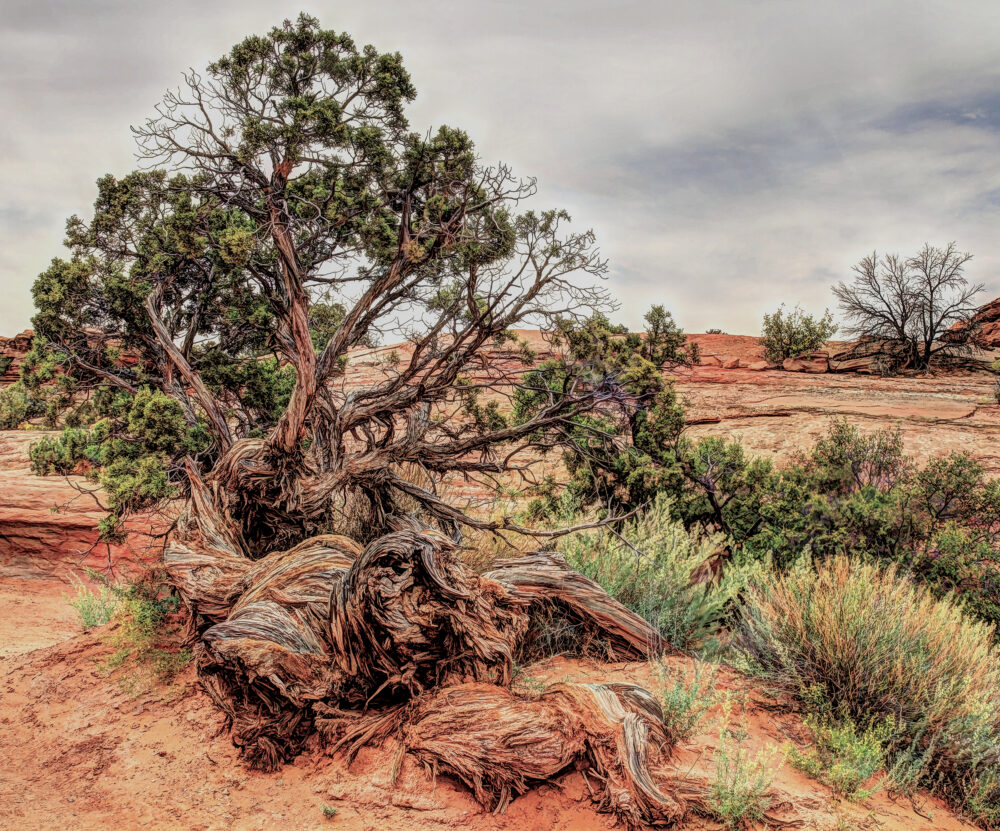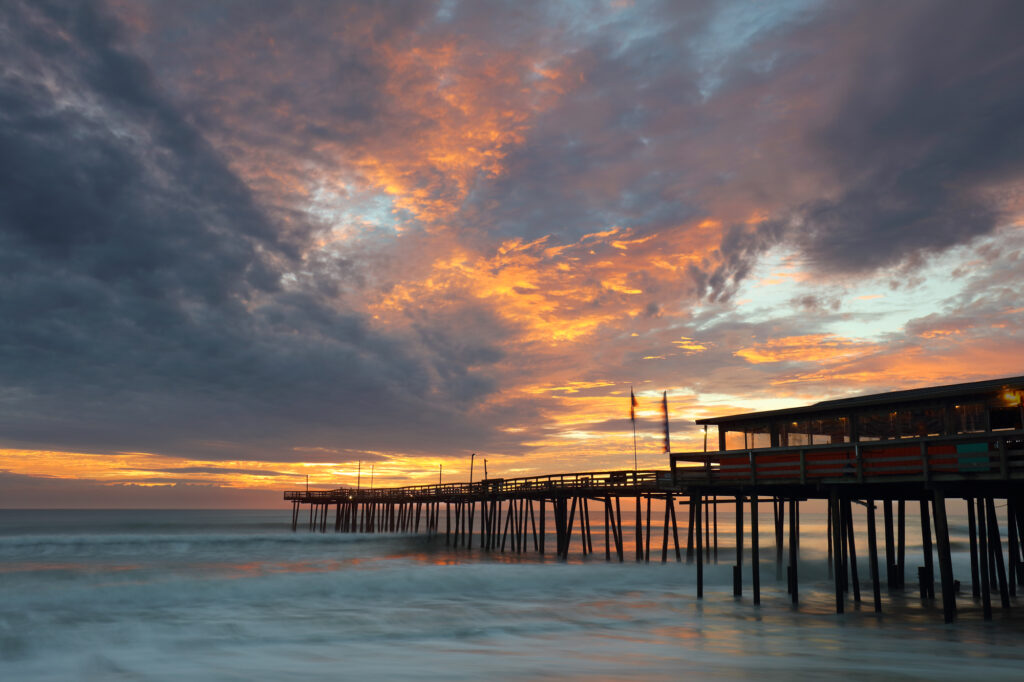Ever seen a landscape photo that just grabs you? The kind that makes you feel like you’re standing right there? That’s the power of drama in landscape photography. Forget boring snapshots. We’re talking photos that tell stories, evoke emotion and demand attention. Here we will show you how to create dramatic landscape photographs using light, composition, weather and editing.
Harnessing the Power of Light and Shadow
Light is everything in photography. It paints the scene, creates mood, and highlights what’s important. Manipulating light is key to creating drama in your landscape images.
Understanding Light Quality: Golden Hour and Blue Hour
Golden hour and blue hour are magical times for landscape photography.
- Golden hour is the time after sunrise and before sunset, with warm, soft light that enhances colors and creates long shadows.
- Blue hour is just before sunrise and after sunset, with cool, muted tones and a peaceful atmosphere.
Imagine a mountain range bathed in the warm glow of golden hour. Or a misty lake reflecting the cool hues of blue hour. These light qualities can transform a simple scene into something extraordinary. To make the most of these times, use a photography app. It will help you predict golden hour and blue hour for your location.
The Dramatic Effect of Shadows: Length, Shape, and Contrast
Shadows add depth, mystery, and mood to your photos. Strong shadows create visual interest and guide the eye through the scene. Think about how long shadows at sunrise or sunset stretch across a field. They draw you into the photo and add a sense of scale.
Shadows define shapes, add depth, and create contrast. Without them, images tend to look flat and uninteresting. Use the absence and presence of light to lead the viewer’s eye, creating a compelling image.
Mastering Exposure for Dynamic Range
Landscape photography often presents challenges with dynamic range. This refers to the difference between the brightest and darkest areas in a scene. Our cameras can’t always capture this entire range in one shot. That’s why techniques like bracketing for HDR (High Dynamic Range) come in handy.
HDR involves taking multiple photos at different exposures and merging them in post-processing. Exposure bracketing and graduated neutral density filters can also help manage dynamic range. Shoot in RAW format to retain more information in highlights and shadows for editing. This gives you more control over the final image.
Compositional Techniques for Maximum Impact
Composition is how you arrange elements within your frame. It’s how you guide the viewer’s eye and create a sense of drama. Strong composition is key to impactful images.

Leading Lines: Guiding the Viewer into the Scene
Leading lines, both natural and man-made, are lines that lead the viewer’s eye into the scene. They create depth and direction. A winding road, a flowing river, or a fence can all serve as leading lines.
Think of a road stretching towards a distant mountain. Or a river snaking through a forest. These lines draw the viewer into the photo and create a sense of journey. Use them to guide the eye and create a more engaging composition.
The Rule of Thirds: Creating Balance and Tension
The rule of thirds is a guideline that suggests dividing your frame into nine equal parts with two horizontal and two vertical lines. Place key elements along these lines or at their intersections. Doing so creates balance and tension in your photos.
Instead of placing the horizon line in the center, try placing it on the top or bottom third of the frame. Position your main subject at one of the intersecting points. This creates a more visually appealing and dynamic composition.
Framing: Adding Depth and Isolation
Framing involves using natural elements to frame your subject. Trees, rocks, or arches can add depth and isolate the subject. This technique draws attention to the main point of interest.
Imagine a landscape framed by trees. Or a mountain peak framed by a rocky arch. Framing creates a sense of depth and perspective, making the photo more engaging. It also helps to isolate the subject, making it stand out.
Weather as a Dramatic Element
Weather can add drama and mood to your landscape photos. Embrace different weather conditions to enhance your dramatic landscape photographs.
Stormy Skies: Capturing the Power of Nature
Stormy skies can create incredible drama in landscape photography. Capture the power of nature by photographing clouds, lightning, and other atmospheric phenomena. Be careful and take the necessary precautions when photographing storms.
Imagine a rumbling thunderstorm over a mountain range. Or lightning striking a coastline. These scenes capture the raw power of nature and create a sense of awe. Use a fast shutter speed to freeze the action and capture the drama of the storm.

Fog and Mist: Creating Atmosphere and Mystery
Fog and mist can simplify a scene and add a sense of mystery. These conditions create a soft, ethereal look. Fog can transform an ordinary landscape into something magical.
Fog and mist simplify a scene by obscuring details. This draws the eye to the remaining visible elements. Arrive early in the morning to capture fog or mist before it dissipates. Embrace the mystery and create a sense of atmosphere in your photos.
Visit our 500px page, view the images and leave a comment!
Post-Processing for Enhanced Drama
Post-processing is where you can enhance the drama already present in your photos. Use editing software to fine-tune the image and create the desired mood.
Contrast and Tone: Emphasizing Light and Shadow
Adjusting contrast and tone is essential for creating drama. Use curves, levels, and other tools to adjust the tonal range. These steps make for a more dramatic look. Contrast helps to separate the light and dark areas of the image. It adds depth and dimension.
Experiment with different contrast settings to see how they affect the mood of your image. A high-contrast image will have strong blacks and whites. This creates bold, dramatic landscape photographs. A low-contrast image will have softer tones. This creates a more subtle, atmospheric feel.
Colour Grading: Setting the Mood
Colour grading can be used to create a specific mood or emotion. Warm colours can create a sense of happiness. Cool colours can create a sense of calm. Desaturation can create a sense of melancholy.
Before and after examples can illustrate the impact of color grading. Subtle adjustments to the color balance can dramatically alter the mood of a photo. Experiment with different color palettes to find what works best for your vision.
Sharpness and Detail: Enhancing Clarity
Sharpening techniques can bring out details and create a sense of clarity. Enhancing the edges and textures in an image make it appear sharper and more defined. But be careful not to over-sharpen as this can can create unwanted artifacts and make the image look unnatural. Use sharpening sparingly and focus on the areas that need it most. Zoom in to check for any unwanted artifacts and adjust the sharpening accordingly.
Finding Dramatic Landscapes
Finding locations that naturally lend themselves to dramatic photography is key. Look for places with interesting terrain, dynamic weather, and unique features.
Mountain Ranges and Coastlines
Mountain ranges and coastlines offer inherent drama. Their rugged terrain and dynamic weather patterns create endless opportunities for stunning photos. The sheer scale and grandeur of these landscapes is inspiring.
Think of the jagged peaks of the Himalayas or the dramatic cliffs of the Irish coast. These places evoke a sense of awe and wonder. Look for interesting compositions and wait for the right light to capture their beauty.
Deserts and Badlands
Deserts and badlands offer stark beauty and dramatic light. The arid landscapes and unique rock formations create a sense of otherworldliness. The light can be harsh and unforgiving. These features work to bring out the best within dramatic landscape photographs.
The vastness of the desert and the intricate patterns of the badlands are visually stunning. Look for interesting textures and shapes. Wait for sunrise or sunset to capture the golden light.
Incorporating Man-Made Elements
Abandoned buildings, bridges, and lighthouses can add drama to landscapes. The juxtaposition of man-made structures against natural landscapes can create a sense of tension.
These elements introduce a sense of history and human presence into the scene. They can also create a focal point and add visual interest. Look for unique perspectives and compositions that highlight the contrast between nature and civilization.
Conclusion
Creating dramatic landscape photographs involves a combination of elements. You need light, composition, weather, and post-processing. Experiment with these techniques to create your own stunning images. Dramatic landscapes have emotional power. Go out and capture it!
A Selection Of Guide Articles
How To Photograph Winter Landscapes
How to photograph winter landscapes, gear, what you need to consider and understanding the how snow affects light
Planning A Photography Roadtrip
A guide to planning a photography roadtrip. How to find locations, what to pack and tips to get the most from your trip
Create Dramatic Landscape Photos
Luck, light, skill and perseverance are just some of the facets needed to create dramatic landscape photos
Landscape Photography: Portrait vs. Landscape Orientation
Comparing composition techniques and when to use landscape versus portrait orientation
Autumn Landscape Photography
Autumn Landscape Photography - what you need and how to plan for and perfectly time your fall landscape adventures
Guide To Photographing Sunrises and Sunsets
A little pre-planning can make photographing sunrises and sunsets much more successful
Landscape Photography with the Reciprocal Rule
The reciprocal rule is the starting point to ensure the images you take are sharp and crisp
Guide To Understanding Metering Modes
Learn about how your camera measure light and the various metering modes plus when to use them to get the best exposure in your photos

